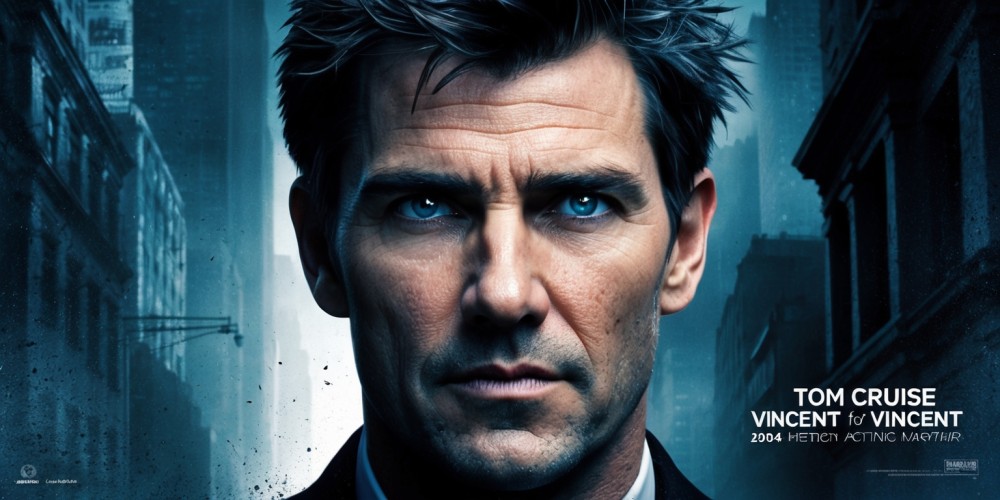Tom Cruise's Dark Transformation: The Method Acting Mastery Behind Collateral
22 Nov, 2024

In the realm of modern cinema, certain performances transcend expectations, leaving audiences captivated and critics in awe. One such performance occurred in Michael Mann’s groundbreaking film, Collateral, where Tom Cruise took a plunge into the untamed depths of method acting. This venture shattered the long-standing perceptions of Cruise's on-screen persona, paving the way for him to embody a chilling villain characterized by icy detachment. The steps he took to prepare for this role were rigorous, unconventional, and ultimately transformative—a testament to the actor's commitment to his craft.
Transforming into the Unthinkable
When Tom Cruise received the opportunity to portray the character of Vincent, a cold-blooded hitman, it rearranged the landscape of his illustrious career. Originally written for another acclaimed actor, Russell Crowe, the role found its unlikely home with Cruise, marking a pivotal moment in his trajectory. His portrayal not only challenged his previous image as the charming heroic figure but also set a new benchmark for how actors could immerse themselves in their characters.
Immersive Preparation
Michael Mann, recognized for his careful focus on detail, insisted that Cruise undergo extensive and intensive training. This wasn’t just about learning to handle weapons or perfecting fight choreography; Mann sought to ensure that Cruise would embody the very essence of a hitman.
The Art of Observation
One of the more intriguing aspects of Cruise's preparation involved the concept of stalking, akin to a predator sizing up its prey. Mann revealed his unconventional training methods, which included following the film's assistant director to mimic how Vincent would target his victims: learning patterns, routines, and the best locations for an ambush.
Delivery Guy in Disguise

The preparation reached an unexpected apex when Mann orchestrated an unusual assignment for Cruise. He was tasked with discreetly delivering a calendar to a local liquor store, blending in like an ordinary delivery person. The objective was simple: go unnoticed.
Successful Deception
Equipped with a uniform emblazoned with a popular delivery service logo, Cruise successfully launched into his mission without raising any suspicions. Those in the liquor store remained blissfully unaware of the Hollywood icon amidst them, showcasing the effectiveness of his method approach.
Masterclass in Transformation
Cruise's transformative method didn’t just stop at external appearance. The psychological implications of embodying Vincent had a profound effect on his performance. Crafting a character with depths of moral ambiguity required a heartless commitment to the persona, which Cruise delivered convincingly.
Contrast with Jamie Foxx
In Collateral, Cruise's unsettling performance as a ruthless killer perfectly contrasted Jamie Foxx's character, Max, a wiry cab driver who unwittingly becomes a pawn in Vincent’s deadly game. Foxx's nuanced performance shone brightly, earning him accolades and an Oscar nomination, while Cruise's villainous turn paved the way for a deepened appreciation for the complexity within characters typically deemed 'good' or 'bad.'
Breaking Stereotypes
Before Collateral, Cruise was often cast as the quintessential leading man, known for his charisma and charm. This film marked a historic shift by allowing him to explore darker motivations and a more ruthless side, challenging long-held notions about his versatility as an actor.
Visual Transformation
The visual impact of Cruise's role cannot be understated. His silver hair, tailored suits, and chilling demeanor painted a striking picture of a character far removed from his previous roles. This aesthetic change alone left audiences stunned and eager to see where this new image would take him.
Directorial Influence
Michael Mann's direction played a crucial role in crafting the film's dark tone and atmosphere. Mann emphasized authenticity and realism, working closely with Cruise to ensure every scene felt alive with tension. This partnership became evident in their shared vision for Vincent, allowing Cruise to explore his character's profound psychological shifts.
A Commercial Success
Collateral proved to be a success not just critically but also commercially, grossing over $220 million worldwide. This financial triumph solidified its standing in the film industry, showcasing the potential for darker narratives to resonate with audiences.
Cinematic Legacy
Years after its release, Collateral remains a vital touchstone in cinema, remembered not only for its thrilling narrative but for transforming perceptions of its lead actors. Tom Cruise’s role redefined what it signifies being a prominent figure in Hollywood cinema, proving that actors can venture into darker realms without compromising their careers.
The Impact of Method Acting
Tom Cruise's methodological approach revived discussions on method acting and the various techniques used by performers to fully engage with their characters. Through pushing boundaries, he invited a new generation of actors to consider the lengths they might go to bring authenticity to their performances.
A Lasting Influence
Post-Collateral, the film's influence can be seen in various blockbuster projects, where actors take on darker and more complex roles. This shift acts as a reminder that adaptability is essential in an actor's career, allowing for new creative opportunities and expansion into uncharted territories.
Conclusion: A New Chapter
The transformation of Tom Cruise in Collateral reflects the impact of narrative and the measures taken to which an actor will go to make a character believable. By embracing a villainous role and immersing himself in the art of method acting, Cruise shattered preconceived notions, leaving an indelible mark on Hollywood. The legacy of this transformative performance persists in motivating both actors and filmmakers, showcasing that the journey of craft can yield remarkable results in the world of cinema.







